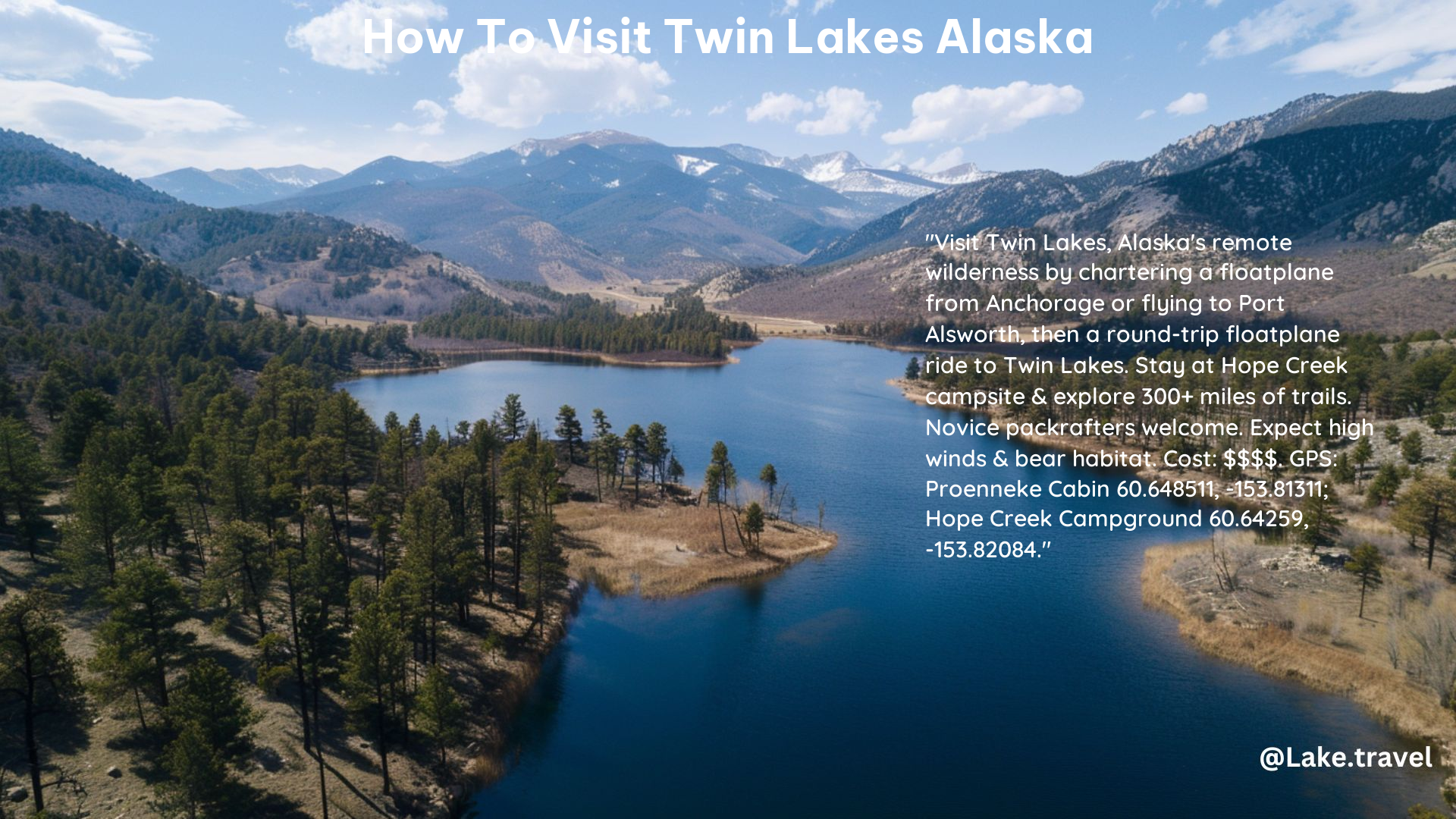Twin Lakes, nestled in the heart of Lake Clark National Park and Preserve, offers a unique and secluded wilderness experience for lakes touring enthusiasts. This comprehensive guide will provide you with all the necessary information to plan your visit to this stunning destination.
Location and Access
Twin Lakes is a remote location in Southwest Alaska, accessible only by air. There are two main options for reaching Twin Lakes:
- Charter a floatplane directly from Anchorage to Twin Lakes. This is the more expensive option but offers direct access to the lakes.
- Fly to Port Alsworth with Lake Clark Air or Lake and Peninsula Air, then charter a round-trip floatplane ride with Lake Clark Air from Port Alsworth to Twin Lakes.
The flight from Anchorage to Twin Lakes takes approximately 1 hour, while the flight from Port Alsworth to Twin Lakes is typically 30 minutes.
Costs

The cost of your visit to Twin Lakes will depend on several factors, including the size of your group, the type of aircraft used, the length of the flight, and the departure location. Here’s a breakdown of the expected costs.
| Service/Activity | Cost |
|---|---|
| Floatplane charter from Anchorage to Twin Lakes | Over $1000 per person |
| Floatplane charter from Port Alsworth to Twin Lakes | $595 per person |
| Guided day trip to Twin Lakes from Port Alsworth | $1000 per person, 2 person minimum |
| Guided 7-day Twin Lakes kayaking/hiking trip | $4,295 per person |
| Guided 5-night Twin Lakes hiking trip, incl. flights, gear, meals | Around $2900 per person |
| Self-guided 5-7 day Twin Lakes backpacking trip, incl. flights | Around $1200 per person depending on group size |
| Camping and backpacking gear rental | Varies by outfitter and duration, e.g. $150 for a 2-day basic package |
It’s important to note that air taxi prices in Alaska can be expensive, as they provide access to remote locations that are seldom seen by other travelers.
Camping and Backpacking
The Twin Lakes area is a popular destination for camping and backpacking enthusiasts. However, to protect the fragile ecosystem, camping within two miles of the lakes is limited to a total of 21 days between April 15 and September 30. Several licensed commercial outfitters offer equipment rentals and guided trips to the Twin Lakes area, making it easier for visitors to explore the region.
Hiking
Twin Lakes offers numerous hiking opportunities, with trails worn into the tundra by years of travel. Backcountry navigation skills are helpful, and some of the popular hiking options include:
- Teetering Rock: 1 mile, 200′ elevation gain. This out-and-back trail leaves from the Historic Proenneke Cabin site and ascends to a scenic viewpoint.
- Emerson Creek trailhead: 60.63227, -153.90394. This trail offers a variety of hiking experiences, from easy walks to more challenging hikes.
Safety and Regulations
When visiting Twin Lakes, it’s important to be aware of the following safety and regulatory considerations:
- Protect the environment: Leave everything you find behind, and stay on trails to protect the vegetation. Removal of artifacts from public land is prohibited by law.
- Building fires: Build fires in the fire ring at the Hope Creek campsite or use personal camp cook stoves outside. Fires are not allowed in the stove, fireplace, or any other location within cabin or other historic structures.
- Eating and preparing food: Eat and prepare food outside to maintain the integrity of historical items in the cabin and other structures.
- Reporting damage: Report any damage or suspected violation to the National Park Service at (907) 781-2218.
- Staying safe in bear country: Learn how to stay safe in bear country and become familiar with the responsibilities that come with fishing in bear country prior to your trip to Twin Lakes.
By following these guidelines, you can help preserve the natural beauty and cultural heritage of the Twin Lakes area while ensuring a safe and enjoyable experience.
